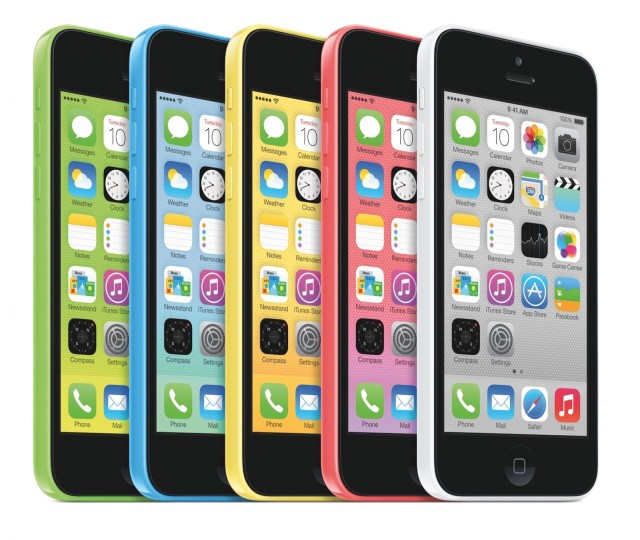Sir Jonathan Ive likes to recycle good ideas, as the Counternotions blog notes with the image above. The “Blue Dalmatian” iMac from 2001 is “separated at birth” from the brand new iPhone 5c.
Likewise, Jony Ive wanted the original iPhone to be a glass-and-metal sandwich with the antenna running around the middle. But his design and engineering teams couldn’t get the electronics to work. Everything was too new and untested. The design was shelved until things could be made to work, and it was reborn four years later as the iPhone 4.
This post contains affiliate links. Cult of Mac may earn a commission when you use our links to buy items.

When it was announced on Tuesday, the iPhone 5c didn’t fit with what pundits had been expecting. As the first plastic iPhone, it’s supposed to be a dirt cheap option; an inexpensive handset to battle cheap Android phones and expand Apple’s market share in emerging territories like India and China.
But at $99 for the 16GB handset and $199 for the 32GB model, it’s basically the same price as the iPhone 4S, which is currently Apple’s cheapest phone. The “c” in 5c was supposed to stand for “cheap” but it’s a mid-priced handset. Instead, the “c” most definitely means “color.”
For the last six years, the iPhone has been a premium product. And like Apple’s other premium products in the computer arena, it’s made of glass and metal. But the 5c, like the original iMac, is “unashamedly plastic,” said Ive in the introductory video.
Ive said the exact same words about the original iMac. That too was an “unashamedly plastic” product. Ive has long been fascinated by plastic. The iMac’s soft plastic skin was “a lovely thing to touch and hold,” he said in a promo video. For a dozen years, the consumer products he designed for Apple came is a variety of different plastics, from the soft-rubbery iBook to the hard white polycarbonate of the iPod.
Like the early iMacs, which came in five “Life Saver” colors, the iPhone 5c comes in five shades. The iMac eventually came in 13 different colors, and became the best-selling computer of all time with 6 million units sold.
Like the iMac, the operating system for the iPhone 5c has been tailored to the device. Back in the late 1990s, when Apple’s programmers were developing Mac OS X, they looked to reproduce the colorful, organic shape of the iMac in software. The iMac inspired OS X’s colorful, airy interfaces with see-through windows and menus, and round, organic buttons.
“We believe the iPhone is an experience,” says Ive in the iPhone 5c introductory video. “And experience is defined by hardware and software working harmoniously together. We continue to refine that experience by blurring the boundaries between the two.” Of course, Ive is now in charge of look of Apple’s software as well as its hardware.
“I think that designs with a real coherence are the result of developing form, material, and color in unison. Each element informing, and in many ways defining the other,” Ive says in the video.
Apple’s strategy for selling cheaper iPhones was to discount the previous year’s model. But consumers knew they were getting last year’s technology. Apple can now offer something sexier than a hand-me-down. The iPhone 5c is the iMac of smartphones. It’s a classic product line extension.
It is bringing the same logic — and design language — of the original Bondi Blue iMac to the handset business.
Leander’s new book about Jony Ive and the Apple design studio is out in November. Jony Ive: The Genius Behind Apple’s Greatest Products is available for pre-order on Amazon.
![Why The Plastic iPhone 5c Is Just Like the iMac G3 [Opinion] Looks familiar, right? Photo: Apple](https://www.cultofmac.com/wp-content/uploads/2013/09/Dalmation-Mac-and-iPhone-5c.jpg)

